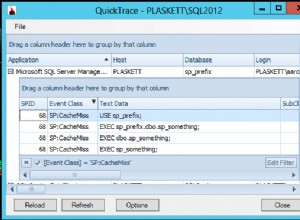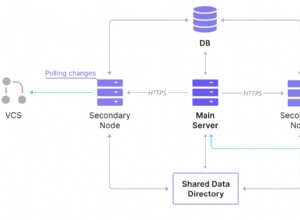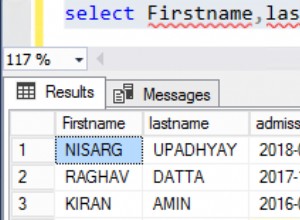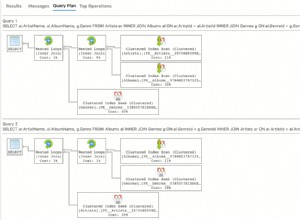tylko jeśli masz mniej niż 10000 e-maili... czy to jest dopuszczalne?
select
if(t1.c > 1, concat(e.employeename, ' (', e.employeeid, ')'), e.employeename) as Employee,
replace(substring(substring_index(e.EmailAddresses, ',', n.row), length(substring_index(e.EmailAddresses, ',', n.row - 1)) + 1), ',', '') EmailAddress
from
(select employeename, count(*) as c from Employees group by employeename) as t1,
(select EmployeeID, length(EmailAddresses) - length(replace(EmailAddresses,',','')) + 1 as emails from Employees) as t2,
(SELECT @row := @row + 1 as row FROM
(select 0 union all select 1 union all select 3 union all select 4 union all select 5 union all select 6 union all select 6 union all select 7 union all select 8 union all select 9) x,
(select 0 union all select 1 union all select 3 union all select 4 union all select 5 union all select 6 union all select 6 union all select 7 union all select 8 union all select 9) x2,
(select 0 union all select 1 union all select 3 union all select 4 union all select 5 union all select 6 union all select 6 union all select 7 union all select 8 union all select 9) x3,
(select 0 union all select 1 union all select 3 union all select 4 union all select 5 union all select 6 union all select 6 union all select 7 union all select 8 union all select 9) x4,
(SELECT @row:=0) as ff) as n,
Employees e
where
e.employeename = t1.employeename and
e.employeeid = t2.employeeid and
n.row <= t2.emails
order by e.employeeid;
EDYTUJ:
Po wygenerowaniu mniej bezużytecznych liczb:
select
if(t1.c > 1, concat(e.EmployeeName, ' (', e.EmployeeID, ')'), e.EmployeeName) as Employee,
replace(substring(substring_index(e.EmailAddresses, ',', n.row), length(substring_index(e.EmailAddresses, ',', n.row - 1)) + 1), ',', '') as EmailAddress
from
(select EmployeeName, count(*) as c from Employees group by EmployeeName) as t1,
(select EmployeeID, length(EmailAddresses) - length(replace(EmailAddresses,',','')) + 1 as emails from Employees) as t2,
(select `1` as row from (select 1 union all select 2 union all select 3 union all select 4) x) as n,
Employees e
where
e.EmployeeName = t1.EmployeeName and
e.EmployeeID = t2.EmployeeID and
n.row <= t2.emails
order by e.EmployeeID;
A czego się nauczyliśmy? Kiepski projekt bazy danych skutkuje okropnymi zapytaniami. I możesz robić rzeczy z SQL, które są prawdopodobnie obsługiwane tylko dlatego, że ludzie robią słabe projekty baz danych... :)




